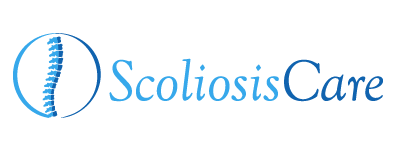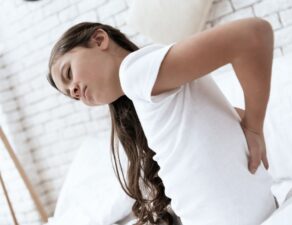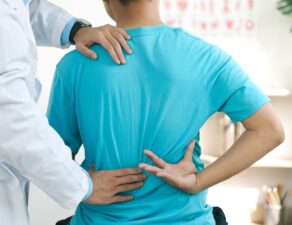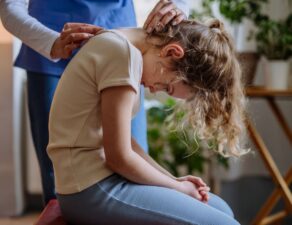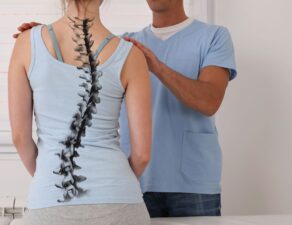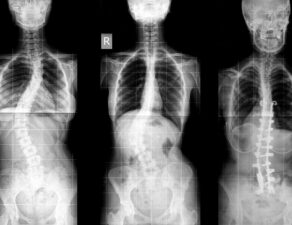
When parents hear the term “rotoscoliosis,” it often raises more questions than answers. While many are familiar with scoliosis (a sideways curvature of the spine), rotoscoliosis introduces an additional complexity that can seem overwhelming at first. The good news is that with proper diagnosis and treatment, most patients with rotoscoliosis can lead active, fulfilling lives.
What Is Rotoscoliosis?
Rotoscoliosis is a specific type of scoliosis characterized by two distinct spinal abnormalities occurring simultaneously: a lateral (side-to-side) curvature of the spine and a rotational component where the vertebrae twist around the spine’s vertical axis.
Think of a normal spine as a straight tower of blocks when viewed from behind. With standard scoliosis, that tower curves to the left or right, forming a C or S shape. With rotoscoliosis, not only does the spine curve sideways, but the individual vertebrae also rotate, causing the spine to twist like a corkscrew.
This rotation is what makes rotoscoliosis particularly significant. As the vertebrae twist, they can pull the rib cage along with them, potentially creating a visible rib hump on one side of the back. This is especially noticeable when the person bends forward. This rotational component also affects how the condition progresses and how it’s treated.
How Rotoscoliosis Differs from Standard Scoliosis
While all cases of rotoscoliosis involve scoliosis, not all scoliosis cases involve significant rotation. Here’s what sets rotoscoliosis apart:
- Three-Dimensional Deformity: Standard scoliosis is primarily a two-dimensional problem. The spine curves in a side-to-side direction when viewed from behind. Rotoscoliosis adds a third dimension: the twisting of the spine itself. This makes the condition more complex both to understand and to treat.
- Visible Changes: The rotational component often creates more noticeable physical changes. As vertebrae rotate, they push the ribs backward on one side, creating a prominent hump. On the opposite side, the ribs may appear sunken or flattened. These changes are typically more visible than those seen with non-rotational curves.
- Treatment Considerations: The rotational element influences treatment planning. Bracing techniques, surgical approaches, and even physical therapy protocols must account for both the lateral curve and the rotational deformity. Simply addressing the side-to-side curve without considering the rotation would result in incomplete correction.
Types and Causes of Rotoscoliosis
Rotoscoliosis can develop for various reasons, and understanding the underlying cause helps determine the most appropriate treatment approach.
- Idiopathic Rotoscoliosis: Like standard scoliosis, the majority of rotoscoliosis cases are classified as idiopathic, meaning no specific cause can be identified. This type typically develops during adolescence, particularly during growth spurts. While the exact mechanism remains unclear, genetic factors appear to play a significant role.
- Congenital Rotoscoliosis: This form is present at birth and results from abnormal vertebral development in the womb. Vertebrae may be incompletely formed, wedge-shaped, or fused together, leading to both curvature and rotation as the child grows.
- Neuromuscular Rotoscoliosis: Conditions affecting the nerves and muscles can lead to rotoscoliosis. These include cerebral palsy, muscular dystrophy, or spinal cord injuries. When muscles cannot properly support the spine, both curvature and rotation may develop.
- Degenerative Rotoscoliosis: While less common in children, adults can develop rotoscoliosis as the spine’s supporting structures deteriorate with age. Disc degeneration and arthritis can cause vertebrae to shift, curve, and rotate.
Recognizing the Signs of Rotoscoliosis
Early detection of rotoscoliosis is crucial for effective treatment. Parents, teachers, and pediatricians should watch for these warning signs:
Visual Indicators
- Uneven shoulders, with one noticeably higher than the other
- One shoulder blade protruding more prominently
- Uneven waist, with one side appearing higher or more curved
- One hip appearing higher or more prominent than the other
- The body appearing to lean to one side when standing straight
- Visible rib hump when bending forward (Adams forward bend test)
- Clothes hanging unevenly or appearing asymmetrical
Physical Symptoms
While many children with rotoscoliosis don’t experience pain initially, some may report:
- Back discomfort or fatigue after prolonged sitting or standing
- Difficulty maintaining upright posture
- Visible changes that cause self-consciousness or emotional distress
- In severe cases, breathing difficulties if the rib cage rotation impacts lung capacity
It’s important to note that rotoscoliosis typically doesn’t cause pain in children and adolescents. If your child is experiencing significant back pain along with visible spinal changes, this warrants prompt medical evaluation to rule out other conditions.
How Rotoscoliosis Is Diagnosed
Diagnosing rotoscoliosis involves several steps, each providing important information about the spine’s condition.
Physical Examination
The evaluation begins with a thorough physical assessment. The doctor will observe posture, shoulder and hip alignment, and perform the Adams forward bend test. During this test, the patient bends forward at the waist while the doctor observes from behind. Any asymmetry or rib prominence becomes more apparent in this position, indicating vertebral rotation.
Imaging Studies
X-rays are the primary tool for confirming rotoscoliosis and measuring its severity. These images allow specialists to:
- Measure the Cobb angle, which quantifies the degree of lateral curvature
- Assess the extent of vertebral rotation
- Identify the curve pattern (thoracic, lumbar, or combined)
- Monitor progression over time with repeat imaging
In some cases, additional imaging like MRI or CT scans may be necessary, particularly if there are concerns about underlying neurological issues or if surgical planning requires more detailed three-dimensional visualization.
Severity Classification
Rotoscoliosis severity is typically classified based on the Cobb angle:
- Mild: curves between 10-25 degrees
- Moderate: curves between 25-40 degrees
- Severe: curves greater than 40-50 degrees
The degree of rotation is also assessed, as curves with significant rotation may require more aggressive treatment even if the Cobb angle is in the moderate range.
Treatment Options for Rotoscoliosis
Treatment for rotoscoliosis depends on several factors: the patient’s age, the curve’s severity, the degree of rotation, and whether the curve is likely to progress. At Scoliosis Care, Dr. Siambanes develops individualized treatment plans tailored to each patient’s unique needs.
Observation and Monitoring
For mild curves (less than 25 degrees) in children who are still growing, careful monitoring may be the initial approach. Regular check-ups every 4-6 months allow the doctor to track whether the curve is stable or progressing. This watchful waiting prevents unnecessary treatment while ensuring intervention occurs if needed.
Bracing
Moderate curves (typically 25-40 degrees) in growing children often benefit from bracing. Modern braces are designed to address both the lateral curve and rotational component of rotoscoliosis. The goal is to prevent curve progression during the crucial growth years.
Different brace designs serve different purposes. Some are worn full-time (18-23 hours daily), while newer nighttime braces can be effective for certain curve patterns. Compliance is crucial for success. Bracing only works when worn as prescribed.
Physical Therapy and Exercise
While exercise alone cannot correct rotoscoliosis, specialized physical therapy programs can help improve posture, strengthen core muscles, and enhance overall spinal stability. Schroth method therapy, specifically designed for scoliosis patients, incorporates exercises that address both the curvature and rotation.
Surgical Intervention
Surgery becomes necessary when:
- Curves exceed 45-50 degrees
- The curve continues progressing despite bracing
- The rotation creates significant cosmetic concerns or functional limitations
- In adults, when the condition causes pain or impacts quality of life
Modern surgical techniques for rotoscoliosis focus on both correcting the lateral curve and derotating the spine. Dr. Siambanes utilizes advanced instrumentation systems, including the state-of-the-art Daytona Deformity System, which he helped design. These systems allow for more precise correction of the three-dimensional deformity that characterizes rotoscoliosis.
Living with Rotoscoliosis
A rotoscoliosis diagnosis doesn’t mean your child can’t lead a normal, active life. With proper management, most patients participate fully in school, sports, and social activities.
Staying Active
Physical activity is generally encouraged for individuals with rotoscoliosis. While certain high-impact activities or those involving extreme spinal flexibility may need to be modified, most sports and exercises are safe and beneficial. Swimming, in particular, is excellent for building core strength without stressing the spine.
Emotional Support
The visible changes associated with rotoscoliosis can affect a child’s self-esteem, particularly during the adolescent years when fitting in feels crucial. Open communication, support groups, and counseling can help young patients navigate these emotional challenges. Many find connecting with others who share their experience tremendously helpful.
Regular Follow-Up
Consistent monitoring is essential, especially during growth years. Even after treatment concludes, periodic check-ups ensure the spine remains stable into adulthood.
Why Specialized Care Matters
Rotoscoliosis requires expertise beyond general orthopedic care. The three-dimensional nature of this condition demands specialized knowledge in spinal biomechanics, growth patterns, and advanced treatment techniques.
Dr. Siambanes brings extensive experience in treating complex spinal deformities. As the director of the scoliosis center at St. Joseph’s Children’s Hospital and founder of Scoliosis Care, he has dedicated his career to helping patients with all forms of scoliosis, including the complexities of rotoscoliosis. His involvement in both operative and non-operative treatment approaches means patients receive comprehensive care tailored to their specific needs.
Expert Rotoscoliosis Treatment in Tampa Bay
If your child has been diagnosed with rotoscoliosis, or if you’ve noticed signs that concern you, specialized evaluation is the next step. Early intervention provides the best opportunity for successful treatment and can prevent complications as your child grows.
Dr. Siambanes serves families throughout the Tampa Bay region, including Tampa, St. Petersburg, Clearwater, Brandon, Wesley Chapel, Lutz, and surrounding areas. He offers comprehensive evaluation and treatment for all types of scoliosis and spinal deformities in both children and adults.
Take Action Today
Don’t wait to address concerns about rotoscoliosis. Early detection and appropriate treatment can make a significant difference in outcomes. Contact us today to schedule a consultation.
